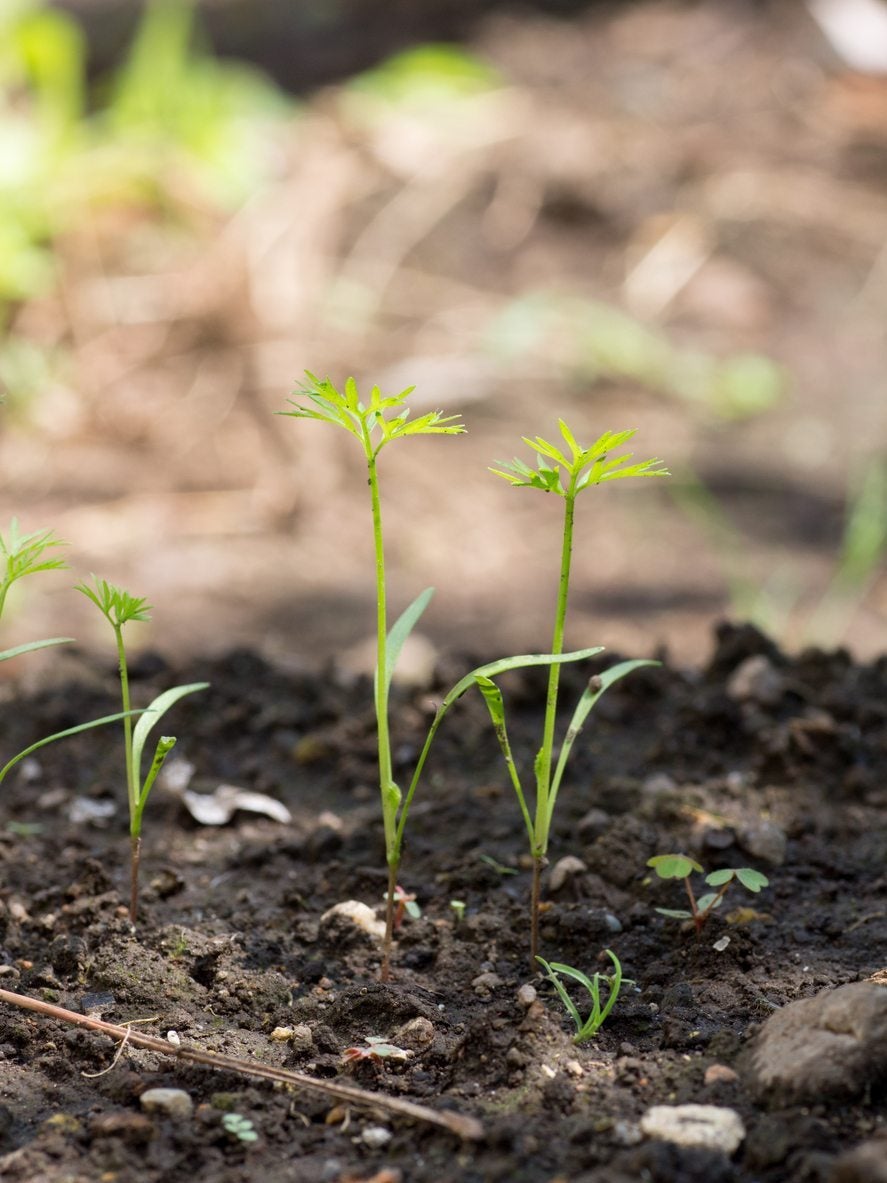What Causes Carrot Damping Off: Reasons For Carrot Seedlings Failing


There are many soil-borne pathogens that can cause damping off in carrot seedlings. This most often occurs in periods of cool, wet weather. The most common culprits are fungi, which live in soil and are active when conditions favor them. If you see carrot seedlings failing, the culprit is likely one of these fungi. If you have recently planted and are asking, "Why are my carrot seedlings dying?", read on for some answers.
Why are My Carrot Seedlings Dying?
Newly emerged seedlings are prey to many problems, from cutworms to disease. Damping off in carrots is a prevalent condition and one that can ruin your crop. Carrots with damping off fungus die as the fungus attacks stems and roots. The good news is you can minimize the chances of getting a fungal disease with good hygiene and cultural practices. Learning what causes carrot damping off and how to prevent the disease is the first step. While damping off is a common problem in many types of seedlings, identification can help you correct the problem in the future. Carrot seedlings failing from this problem often exhibit limp stems, wilting, browning, and falling over. The responsible party for damping off lives in the soil and can often persist for years, so crop rotation does little to help unless you choose a variety that is not susceptible. Several fungi can cause damping off such as Alternaria, Pythium, Fusarium, and Rhizoctonia. During periods of wet, cloudy weather, the fungi bloom and produce spores that spread easily in newly planted areas.
Treating Damping Off in Carrots
Carrots with damping off fungus should immediately stop being watered for a while. Allow the soil to dry a little around the little plants. This may stop the fungus in its tracks. Watering with a chemical that treats fungal diseases may halt the progression. Copper drenches are especially useful on crops like carrots. After mixing the copper dust with water, drench the soil around the roots as well as the plants. There is some information that a drench of potassium permanganate at a rate of 1 ounce (29.5 mL.) to 4 gallons of water (15 L.) is also useful and can be used on a variety of plants. Indoor plants in flats or pots should receive better air circulation and bright light. Outdoor plants should be thinned.
Preventing Damping Off Fungus
Stopping the fungus before it attacks the seedlings is the best option. Plant in a raised bed that drains well and avoid overwatering. Sterilizing or using sanitized soil in the greenhouse can also prevent the fungus. To sterilize soil, place in a non-metal pan and place in the microwave. Cook the soil for 2 ½ minutes. Let the soil cool thoroughly before using it to plant. If you can get a hold of Formalin, it is also useful to disinfect the soil. Additionally, disinfect any containers used for planting. Use practices such as long crop rotation of up to 4 years, pathogen-free seed, and remove and destroy any leftover plant material that may harbor the disease.
Gardening tips, videos, info and more delivered right to your inbox!
Sign up for the Gardening Know How newsletter today and receive a free copy of our e-book "How to Grow Delicious Tomatoes".

Bonnie Grant is a professional landscaper with a Certification in Urban Gardening. She has been gardening and writing for 15 years. A former professional chef, she has a passion for edible landscaping.
-
 8 Perfect Flowers To Plant With Tomatoes To Boost Yields & Banish Pests
8 Perfect Flowers To Plant With Tomatoes To Boost Yields & Banish PestsDon’t forget flowers when choosing companion plants for your tomato beds or pots. These pretty, fragrant flowers add beauty but are also highly beneficial.
By Mary Ellen Ellis
-
 Want The Longest Lasting Hydrangea Flowers? Grow These 8 Panicle Hydrangea Varieties
Want The Longest Lasting Hydrangea Flowers? Grow These 8 Panicle Hydrangea VarietiesFor ornamental shrubs that deliver the longest flowering seasons with plush blooms and delicate hues, these panicle hydrangea varieties are essential in your yard
By Tonya Barnett